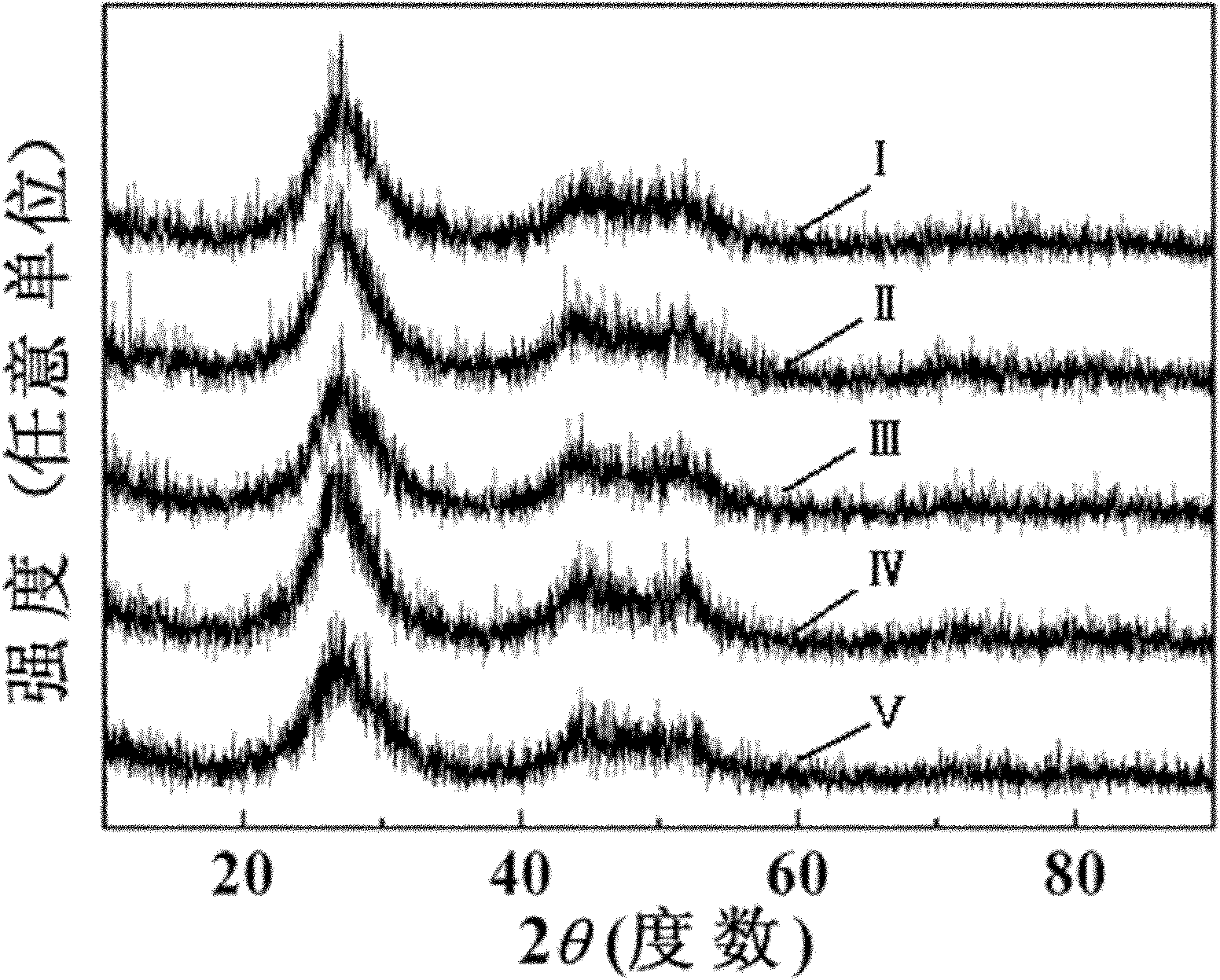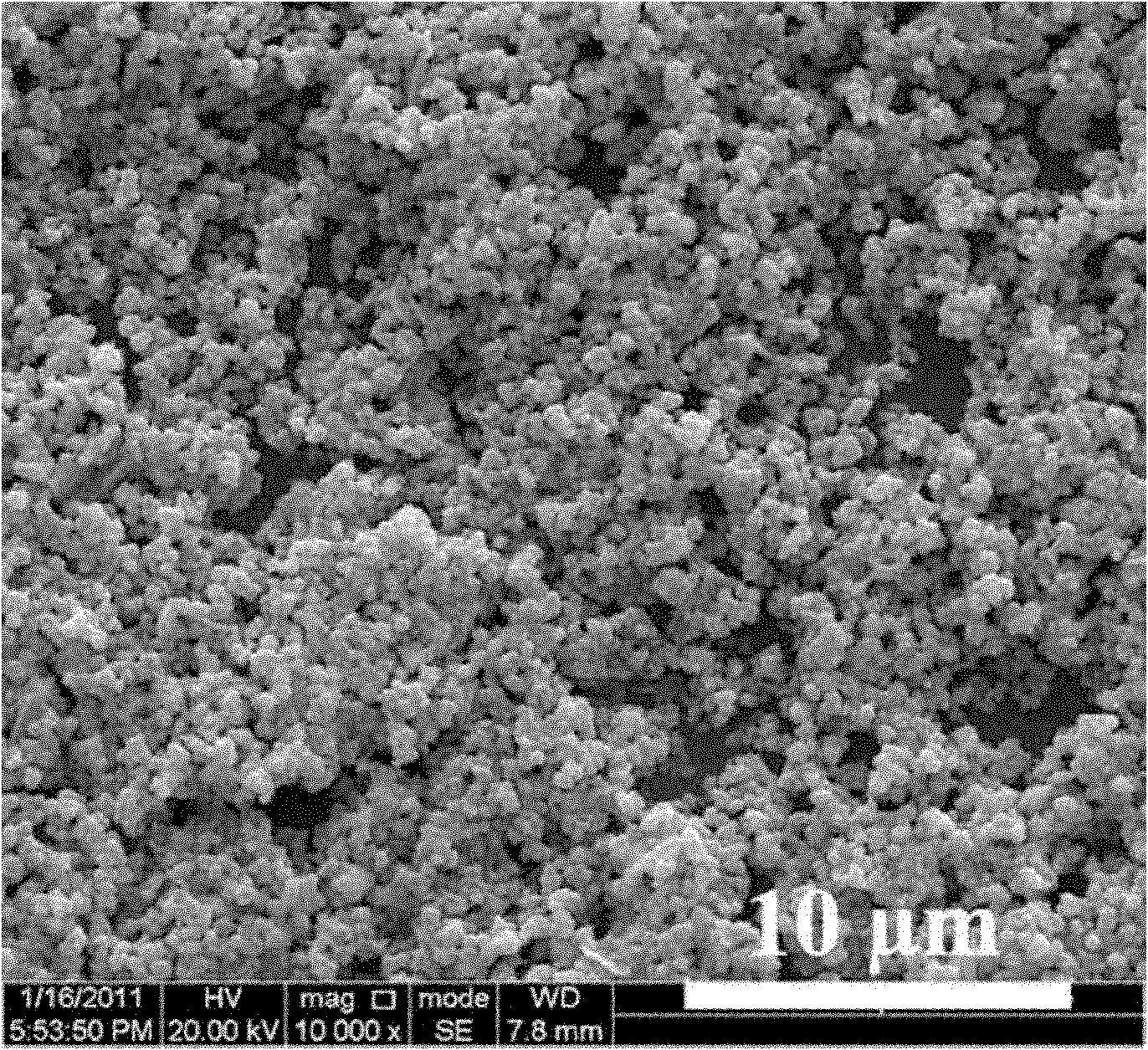CdS/MoO3 composite photocatalyst and preparation method thereof
A catalyst and composite light technology, applied in physical/chemical process catalysts, chemical instruments and methods, chemical/physical processes, etc., can solve the problems of inability to degrade organic pollutants, low activity, low hydrogen production rate, etc., and achieve uniform particle size. , the effect of high catalytic activity and low price
- Summary
- Abstract
- Description
- Claims
- Application Information
AI Technical Summary
Problems solved by technology
Method used
Image
Examples
specific Embodiment approach 1
[0012] Specific implementation mode 1: CdS / MoO in this implementation mode 3 Composite photocatalyst composed of Cd(Ac) 2 2H 2 O, (NH 4 ) 6 Mo 7 o 24 4H 2 Made from O and thioacetamide; where (NH 4 ) 6 Mo 7 o 24 4H 2 O and Cd(Ac) 2 2H 2 The molar ratio of O is 0.1:1~3, Cd(Ac) 2 2H 2 The molar ratio of O to thioacetamide is 1:1.03-8.24.
[0013] The composite photocatalyst obtained in this embodiment is nano-spherical, the nano-sphere particle size is 300nm-350nm, and is self-assembled by small particles each particle size is 5-20nm, and the nano-spheres are evenly embedded with CdS nanocrystals.
specific Embodiment approach 2
[0014] Specific embodiment two: the difference between this embodiment and specific embodiment one is (NH 4 ) 6 Mo 7 o 24 4H 2 O and Cd(Ac) 2 2H 2 The molar ratio of O is 0.1:2, Cd(Ac) 2 2H 2 The molar ratio of O to thioacetamide is 1:5. Others are the same as in the first embodiment.
specific Embodiment approach 3
[0015] Specific implementation mode three: CdS / MoO in this implementation mode 3 The preparation method of composite photocatalyst is as follows: one, weigh Cd(Ac) 2 2H 2 O, (NH 4 ) 6 Mo 7 o 24 4H 2 O and thioacetamide are then added to 5mL-20mL of acetone or ethanol solution to form a mixture, in which (NH 4 ) 6 Mo 7 o 24 4H 2 O and Cd(Ac) 2 2H 2 The molar ratio of O is 0.1:1~3, Cd(Ac) 2 2H 2 The molar ratio of O to thioacetamide is 1:1.03~8.24; 2. Seal the mixture obtained in step 1 and put it into an ultrasonic reactor, and react at 40°C~80°C for 0.5h~8h; 3. Put the mixture in step 1 The product obtained by the second reaction is cooled to room temperature, washed with absolute ethanol for 2 to 5 times, and then dried in an oven at 50°C for 0.5h to 5h to obtain a composite photocatalyst.
PUM
| Property | Measurement | Unit |
|---|---|---|
| Particle size | aaaaa | aaaaa |
Abstract
Description
Claims
Application Information
 Login to View More
Login to View More - R&D
- Intellectual Property
- Life Sciences
- Materials
- Tech Scout
- Unparalleled Data Quality
- Higher Quality Content
- 60% Fewer Hallucinations
Browse by: Latest US Patents, China's latest patents, Technical Efficacy Thesaurus, Application Domain, Technology Topic, Popular Technical Reports.
© 2025 PatSnap. All rights reserved.Legal|Privacy policy|Modern Slavery Act Transparency Statement|Sitemap|About US| Contact US: help@patsnap.com



